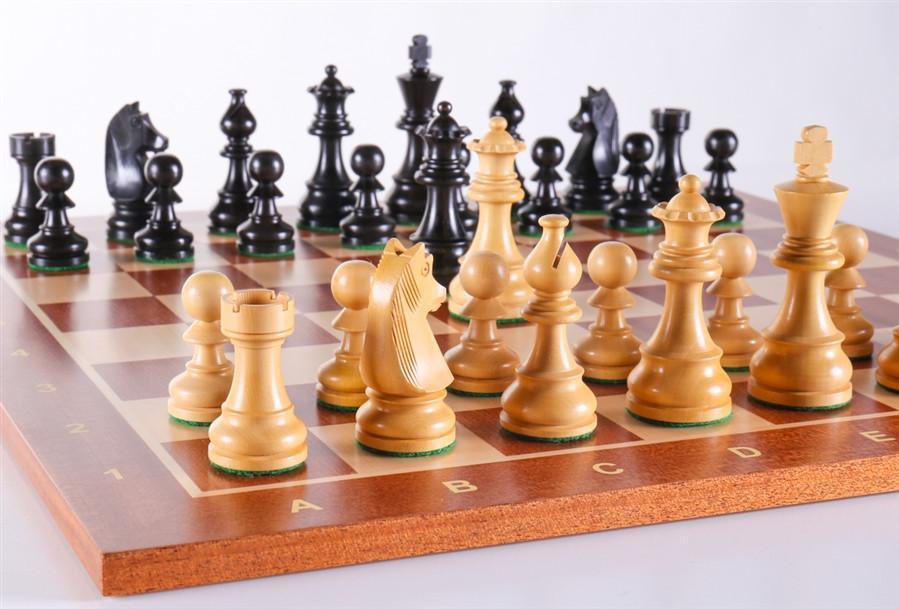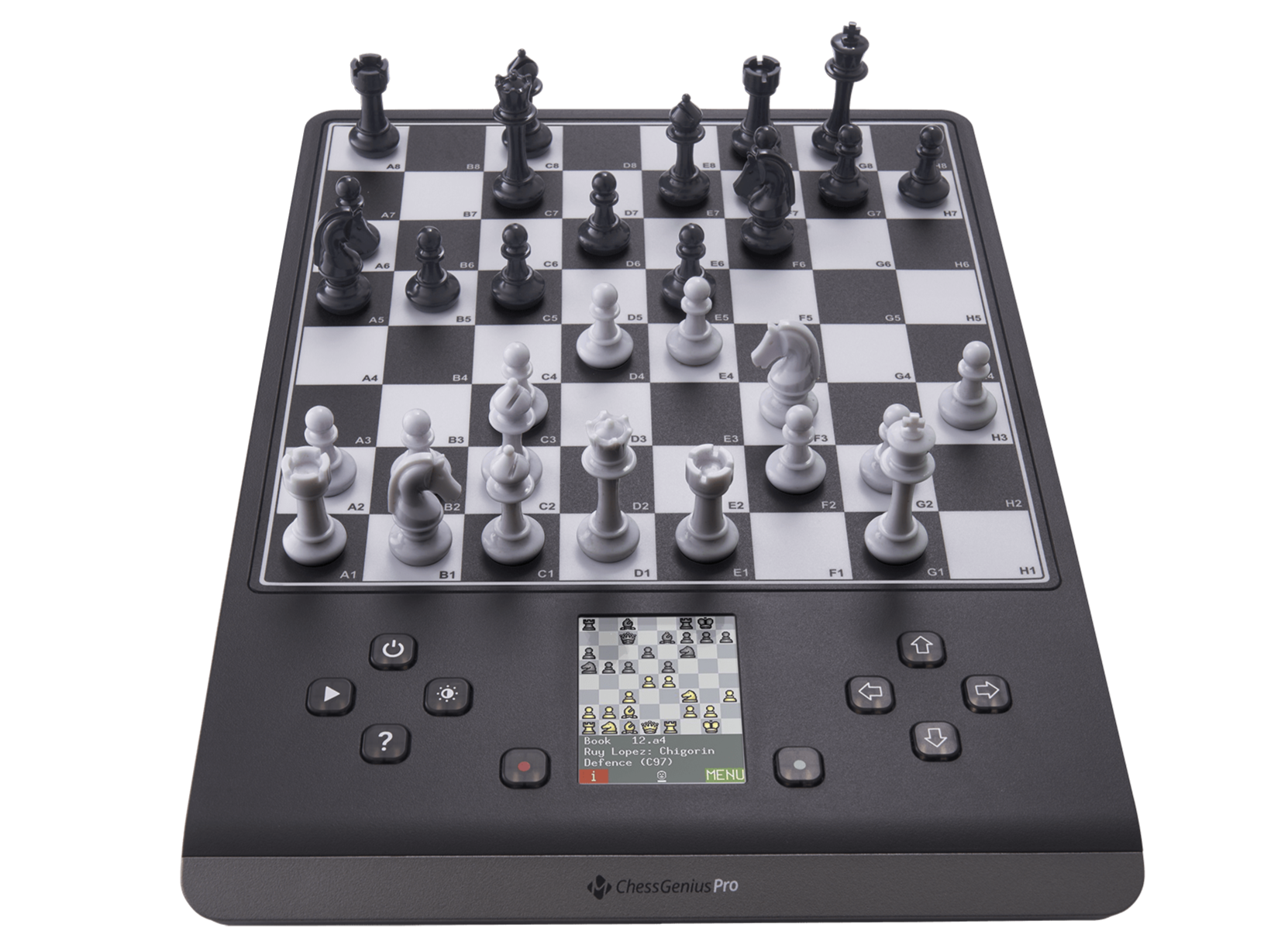

DGT XL Digital Chess Clock - Burgundy

DGT XL Digital Chess Clock - Burgundy
Sale price$99.95 USD
Regular price$109.95 USD (/)
Chess House Guarantee
- Easy parts. When buying a chess set online, we've got you covered. With us, you have easy access to parts for years so your set is always playable.
- Safe, timely arrival. Every order is thoughtfully packed. Plus, delivery time is clear from checkout until it reaches your door.
- Peace of mind. Easy access to our friendly experts and 90 day, no-hassle returns.
That's why 21,522 people rate Chess House 4.8 out of 5 stars.
About The DGT XL Digital Chess Clock - Burgundy
The DGT XL offers 11 different standard methods for timing two-player games and connects to the DGT Chessboard. Most frequently used times are pre-programmed in the DGT Clock, but you can also combine different timing features by manually programming your own.
Dimensions: 6 1/8" x 4 5/8" x 2 1/4"
Features:
1. TIME: This is the simplest way to allocate time. Each player is given one period in which they must make all moves.
2. 1 PERIOD + Guillotine: The first period is used to play a predetermined number of moves. The second period, the Guillotine, is used to finish the game. 1 Period + Guillotine can be used as an alternative to the traditional Rapid and Blitz with a quiet start.
3. 2 PERIODS + Guillotine: For a less frantic game, it is possible to play a game with two periods before the Guillotine.
4. 3 PERIODS + Guillotine: A quiet end to a game also has its advantages. The simple traditional clock gives the players repeated one-hour periods in which to complete a predetermined number of moves. For more than 50 years, it was standard in chess to play a serious game in two periods separated by a break. This had two disadvantages: Games could not always be decided after two periods. From 1990 onwards, the increasing strength of chess computers and endgame databases added what some considered an unfair advantage in the ability to analyze adjourned games. Various proposals were made for ways to finish games in one session, without having to resort to the Guillotine method, as this method may influence the final result of the game in a way that can be unsatisfactory to the players. The Bronstein delay and Fischer methods provided a solution by giving players a predetermined amount of extra thinking time after making each move.
5. Fischer- Blitz, Rapid and Slow: This method applies from the first move, allowing a player to gain extra time apart from the standard period, as every completed move attracts extra time. By completing moves in a time that is shorter than the extra time per move, a player can build up the thinking time available for subsequent moves.
6. Fischer- Tournament: The Fischer - Tournament method is the most complex in the way thinking time is regulated. In addition to the extra time available per move, the player is also allotted an extra amount of principal thinking time after a predetermined number of moves has been completed.
7. Bronstein- Blitz, Rapid and Slow: The oldest proposal from the chess world for a solution to the problem of limited thinking time came from IGM David Bronstein. His method applies from the first move. The principal thinking time is reduced by delay. Before the principal thinking time is reduced the player has a fixed amount of time to complete a move. It is not possible to increase the thinking time by playing more quickly as it is in the FIDE and Fischer methods.
8. 2 PERIODS + Fischer: This method also applies from the first move. Starting the game in a traditional way, the player has to complete a predetermined number of moves within a fixed period of time. By playing the last period using Fischer, situations where time trouble influences the result of the game too much can be avoided.
9. GO using the Canadian Byo-yomi method: This method is derived from the original Japanese Byo-yomi method of the game GO. When playing with traditional clocks was the method that was most commonly used, an official who would be in control of the time using a stopwatch would always accompany the players. The player gets an extra 5 or 10 minutes of extra thinking time to complete a predetermined number of moves, usually 10 or 15, after the standard thinking time had been used up.
10. Scrabble + Upcount: In Scrabble, games have to be finished, even if a player exceeds the available thinking time. The more time a player uses after exceeding the available thinking time, the bigger the number of points that will be subtracted.
11. Hourglass: The thinking time for the player to move decreases, while simultaneously the opponent's thinking time increases. This method offers an exciting alternative to the traditional blitz.
Dimensions: 6 1/8" x 4 5/8" x 2 1/4"
Features:
- Option to mix timing systems (e.g., start with a normal countdown period followed by a "Fischer" or "Bronstein Delay" period).
- Increased display size: digits are 18mm in height.
- Connects to the DGT electronic chessboard and has special internet features like an option to display messages.
- More display information (timing system, current game period, white/black player indicator, ...).
- Buzzer can be switched on or off.
- Easy operation with extra buttons.
- Extra upcount timing method.
- Save and retrieve 5 user defined manual settings.
1. TIME: This is the simplest way to allocate time. Each player is given one period in which they must make all moves.
2. 1 PERIOD + Guillotine: The first period is used to play a predetermined number of moves. The second period, the Guillotine, is used to finish the game. 1 Period + Guillotine can be used as an alternative to the traditional Rapid and Blitz with a quiet start.
3. 2 PERIODS + Guillotine: For a less frantic game, it is possible to play a game with two periods before the Guillotine.
4. 3 PERIODS + Guillotine: A quiet end to a game also has its advantages. The simple traditional clock gives the players repeated one-hour periods in which to complete a predetermined number of moves. For more than 50 years, it was standard in chess to play a serious game in two periods separated by a break. This had two disadvantages: Games could not always be decided after two periods. From 1990 onwards, the increasing strength of chess computers and endgame databases added what some considered an unfair advantage in the ability to analyze adjourned games. Various proposals were made for ways to finish games in one session, without having to resort to the Guillotine method, as this method may influence the final result of the game in a way that can be unsatisfactory to the players. The Bronstein delay and Fischer methods provided a solution by giving players a predetermined amount of extra thinking time after making each move.
5. Fischer- Blitz, Rapid and Slow: This method applies from the first move, allowing a player to gain extra time apart from the standard period, as every completed move attracts extra time. By completing moves in a time that is shorter than the extra time per move, a player can build up the thinking time available for subsequent moves.
6. Fischer- Tournament: The Fischer - Tournament method is the most complex in the way thinking time is regulated. In addition to the extra time available per move, the player is also allotted an extra amount of principal thinking time after a predetermined number of moves has been completed.
7. Bronstein- Blitz, Rapid and Slow: The oldest proposal from the chess world for a solution to the problem of limited thinking time came from IGM David Bronstein. His method applies from the first move. The principal thinking time is reduced by delay. Before the principal thinking time is reduced the player has a fixed amount of time to complete a move. It is not possible to increase the thinking time by playing more quickly as it is in the FIDE and Fischer methods.
8. 2 PERIODS + Fischer: This method also applies from the first move. Starting the game in a traditional way, the player has to complete a predetermined number of moves within a fixed period of time. By playing the last period using Fischer, situations where time trouble influences the result of the game too much can be avoided.
9. GO using the Canadian Byo-yomi method: This method is derived from the original Japanese Byo-yomi method of the game GO. When playing with traditional clocks was the method that was most commonly used, an official who would be in control of the time using a stopwatch would always accompany the players. The player gets an extra 5 or 10 minutes of extra thinking time to complete a predetermined number of moves, usually 10 or 15, after the standard thinking time had been used up.
10. Scrabble + Upcount: In Scrabble, games have to be finished, even if a player exceeds the available thinking time. The more time a player uses after exceeding the available thinking time, the bigger the number of points that will be subtracted.
11. Hourglass: The thinking time for the player to move decreases, while simultaneously the opponent's thinking time increases. This method offers an exciting alternative to the traditional blitz.







